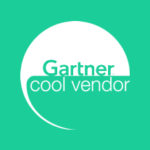Because it’s a relatively new information management approach, implementing EIM isn’t without its challenges. But once those challenges are overcome, you can use it not only to increase operational efficiency but to also secure critical information, meet compliance regulations, and improve productivity.
Benefits of Enterprise Management Software
Most organizations have separate applications to tackle analytics, content management, and business processes. EIM software removes silos by combining them in an integrated platform that uses tools and capabilities to capture, integrate, manage, and analyze data to make critical business decisions.
Businesses that use information management strategies that offer comprehensive views of their data are better equipped to govern what can be done with it.
Significant benefits of EIM include:
- Improved data governance. It’s easier to manage discoverable data than it is data that’s stored in difficult-to-reach systems. EIM capably gathers data from multiple sources, including legacy systems.
- Speedier market response. Response to market changes can be made more efficiently when all the decision-making information needed is readily available.
- Company-wide information transparency. Authorized users can easily access information relevant to their field from a single location.
- Improved profitability. EIM offers better access to all your data, no matter where it resides, enhancing responsiveness to market shifts, thus increasing profitability for your organization.
- Improved collaboration. The insights gained from greater information visibility improve collaboration in departments and business units. That, in turn, can improve efficiency in cases where business information’s needed to move projects forward.
- Identify important trends. EIM makes more precise data findings possible. Analyzing the data to spot trends can help you discover relevant business insights for improving overall efficiency.
Challenges to Implementing Enterprise Information Management Strategies
Central to successful EIM is increasing access to relevant information, no matter what system it originates from. Common challenges in implementing EIM include:
- The diversity of file formats
- Data stuck in legacy systems
- Overcoming siloed information
- The general user experience
Implementation challenges enterprises face run the gamut from choosing the appropriate software to training employees to use EIM technologies effectively.
Other issues organizations must resolve to make EIM a respected and permanent function include:
- EIM leadership.
- Data governance.
- Information valuation techniques
- Management metrics
- Information architecture integration
Though many organizations still struggle to implement successful EIM, those who’ve succeeded are best prepared to compete in an omnichannel world and adapt to an ever-evolving digital landscape. They’re can also achieve key performance objectives, such as improving information integration and sharing.
Enterprise Information Management Framework: Understanding Your Data
Organizations that maintain numerous data silos often spend more time managing them than leveraging the information they contain benefit the enterprise. To avoid this situation, it’s essential to establish a strategy that includes people, processes, and technology best practices that facilitate agile and flexible information management solutions.
This strategy is the essence of EIM and includes:
Corporate Vision
A good EIM strategy is drawn from a technological roadmap that considers your current status and needs. Which data and use cases must be addressed? Which information management processes are relevant, and how do they change over time? Developing an effective EIM strategy leads to accurate, secure, transparent, and consistent access to data that flows continuously throughout the enterprise.
Governance
Good governance is critical to:
- Ensuring stakeholders feel confident in your EIM vision and strategy.
- Facilitating business and IT alignment
- Establishing respective roles and responsibilities for organizational data and information.
Your organization’s governance structure should address the development, communication, maintenance, and enforcement of data management policies and procedures, as well as the services, tools, and technologies needed to support an enterprise-wide data management and services culture.
Core Processes
Documenting and understanding the flow of organizational information is essential to optimizing business processes, governance, and organization. Who creates and consumes information? What processes do you need to support the creation, management, publishing, archiving, retrieval, and leveraging of high-quality information across your organization?
EIM’s core processes focus on increased information accountability and transparency across the enterprise. They also support governance and processes integration at user, business, and data levels.
Organization
An effective EIM strategy uses KPIs, critical success factors, and roles and responsibilities to define the structure needed to ensure a successful EIM initiative. Who will the chief data officer report to within your organization? How will new strategy, governance, and stewardship roles and structures align and reconcile across programs and projects?
Infrastructure
EIM infrastructure defines the principles, practices, and tools that allow you to maximize EIM software. What technology infrastructure does your enterprise need to achieve its EIM goals? Will your chosen solution fit into your organization’s overall enterprise information and technology architecture?
When establishing your EIM infrastructure, consider:
- Selecting best practices that use existing and new tools and technologies.
- Procuring tools that allow for broad data accessibility.
- Acquiring resources with real-time dashboards that speed up business operations.
What’s Your Enterprise Information Management Strategy?
The ultimate purpose of enterprise information management tools is to refine raw information into a valuable enterprise asset. While it makes sense to think of it as an entirely technical endeavor, a successful EIM strategy is more business-driven than you might expect.
Some best practices for planning and executing an EIM strategy are:
- Using a pain-point approach to develop concrete business cases for stakeholders. For instance, is your marketing department continually mired in data inconsistencies? Is your compliance program struggling to stay current?
- Getting stakeholders involved from day one. When stakeholders are given the opportunity to share their business priorities from the start, they’re more likely to buy-in to the eventual solution.
- Assess your organization’s baseline level of information management. Which vendors’ systems are you currently using and when do the contracts expire? What’s your approach to governance, etc.?
- Adopt a phase-in implementation. EIM is an enterprise-wide strategy, but it can only succeed if introduced in manageable bites.
- Choose the right partner. EIM implementation requires a strategic partner with experience in all areas of EIM planning and launching.
Israeli-based ZIM Integrated Shipping Ltd has 170+ offices spread across the world. The company needed a way to manage information accumulated over more than 30 years, most of which was strictly regulated and segmented according to regions and roles.
By implementing KMS Lighthouse’s information management software, ZIM was able to provide its global customer service representatives with instantaneous access to the information they needed to consistently deliver accurate, consistent, and relevant knowledge.
Information is the most valuable commodity of the digital economy. EIM software helps organizations connect content with business solutions and extract value from and secure their information while meeting growing compliance requirements.







